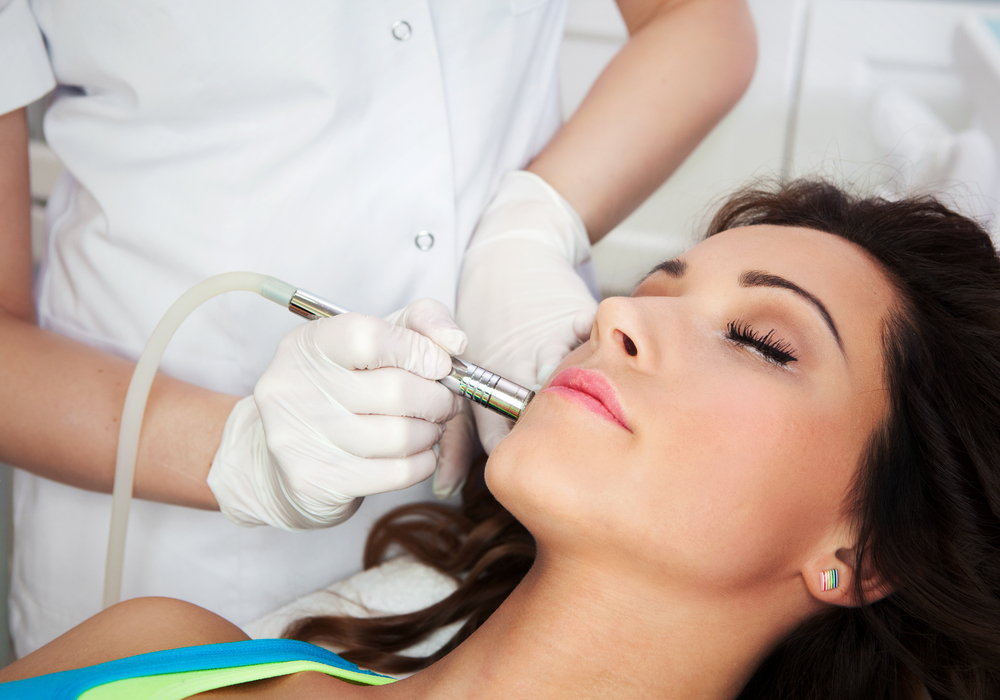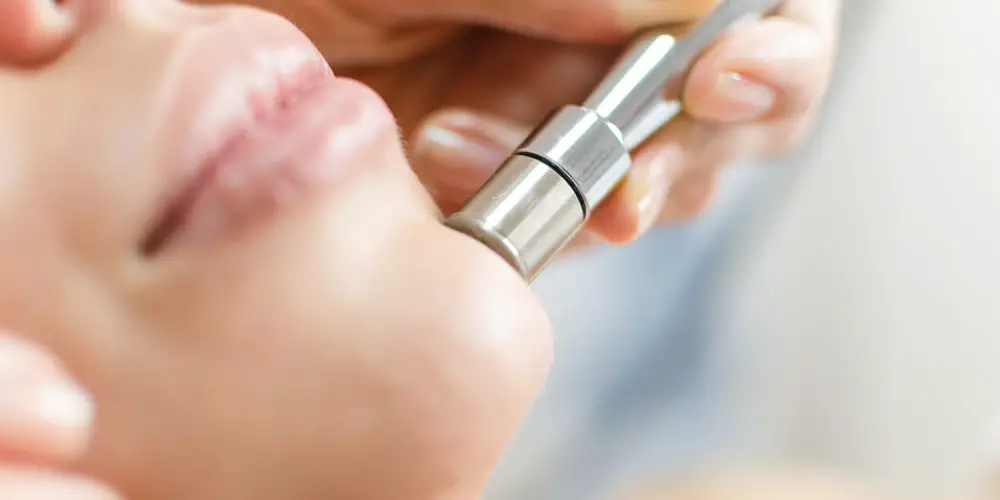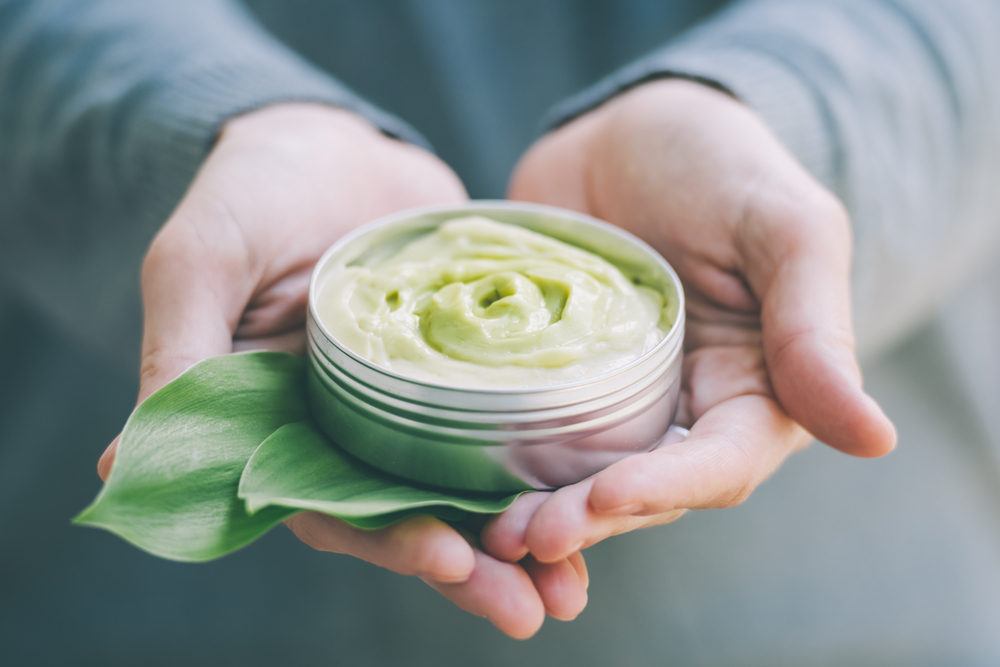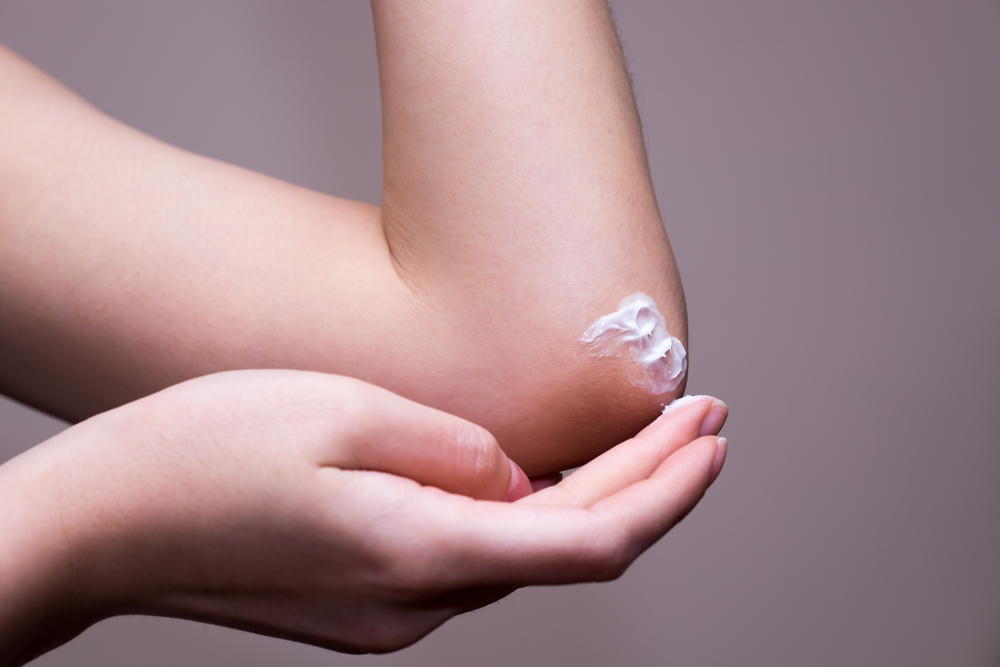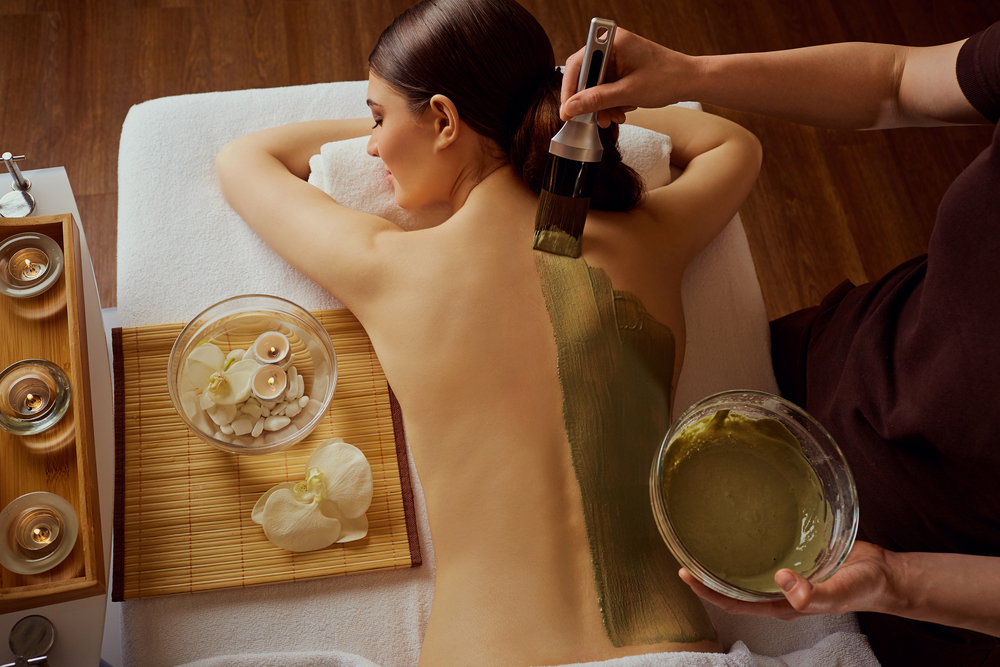Microdermabrasion is the ultimate exfoliator.
As one of the more recent skincare treatments to cross over from Hollywood into the mainstream, this non-invasive treatment is a favorite of many who want a relatively inexpensive and gentle way to refresh their complexion.
What is microdermabrasion?
Microdermabrasion is a term used for any procedure involving the use of tiny, rough grains or particles to buff away the outermost layer of skin.
It is most often used on the face to remove age spots and dull skin, but treatments can also be performed on the chest, neck, arms, and hands.
There are literally dozens, if not hundreds of products and treatments that use this method, including salon or spa facials, creams or scrubs you can use at home, and even more advanced professional medical procedures.
A brief history lesson
The underlying concepts behind microdermabrasion have been around for thousands of years, dating all the way back to 1500 BC and Ancient Egypt. There, physicians would use a kind of sandpaper to smooth scars.
More recently, in Germany during the early 1900s, dermatologist Dr. Ernst Kromayer started using a hand powered rotating wheel with rasps to remove the outer layer of skin, effectively inventing dermabrasion.
By the 1950s, motorized wire brushes had surpassed their hand-powered ancestors and dermabrasion became more accessible. But problems arose with the intensity of dermabrasion, including pain, scarring, infection, and a lengthy recovery.
In response to these problems, the first microdermabrasion machine was invented in 1985 in Italy, by doctors Mattioli and Brutto. They would eventually introduce their creation to the American public in the mid-to-late-1990s, and the practice would quickly go on to explode in popularity.
Today, there are well over 100 different microdermabrasion machines to choose from, although there currently aren’t any manufacturing performance standards specified for these machines. The FDA has named microdermabrasion a “Class 1” medical device, which means two things:
- The machines can be sold without showing that they are clinically effective.
- The machines can be operated without supervision by a medical professional.
How microdermabrasion works
To better understand what microdermabrasion does, and how it does it, there are first several things you should understand about your skin.
Your skin is made up of two layers — the outer epidermis, and the deeper dermis. Your epidermis is more or less made up of a layer of dead skin cells sitting on top of another layer of skin cells that are in the process of maturing.
The outermost top layer of the epidermis is called the “stratum corneum,” and it works like a barrier, protecting the deeper layers of skin from all the dirt, grime, and possible infections of the outside world, keeping all but the very smallest molecules out. In fact, even when you use moisturizing lotions or creams, only some of their moisturizing ingredients make it through this layer.
The stratum corneum is also where many of those irritating minor skin imperfections, such as blemishes, fine lines and wrinkles, are found. It’s also where all of the action of microdermabrasion happens.
In fact, since only the top layer of the epidermis is treated, this procedure should probably be technically called “micro-epi-dermabrasion.” If the exfoliating action were any deeper it would be very painful, possibly quite harmful, and would run the risk of permanently embedding the grit particles into the skin.
Microdermabrasion essentially works the same way regardless of whether you’re using a product designed for home use, or a specialized tool in a professional setting, like a spa or doctor’s office.
The underlying idea is that if the stratum corneum is removed, or even partially broken up, your body will see that as a mild injury. It will then rush to replace the lost skin cells with brand new, healthy ones. There’s usually a little swelling and redness for the first hour after treatment, but it fades very quickly.
Obviously, the more intense the treatment, the more swelling and redness you’ll have.
The healing process
The healing process your skin goes through when it replaces the stratum corneum brings newer skin cells that look and feel much smoother. Many of the skin’s visible imperfections, like fine lines, sun damage, or acne scars, are also removed.
Also, without the stratum corneum to act as a physical barrier, medicinal creams and lotions can find their way into the deeper layers of the epidermis and dermis where they work more effectively. Incidentally, moisturizing creams are always applied after a microdermabrasion treatment because the treatment temporarily removes some of the skin’s natural moisture.
Repeated treatments at regular intervals have some potential long term effects as well. Early studies have suggested that this might impact the way the lower layers of skin grow, promoting smoother skin, as well as removing deeper blemishes and scars over a longer period of time.
Best of all, the procedure itself is so gentle and quick you can have it performed during your lunch break and go right back to work!
RELATED: SilkPeel DermalInfusion — The Latest Trend In Med Spa Facial Treatments
Microdermabrasion vs. dermabrasion
At this point it’s important to note that there is a big difference between microdermabrasion and dermabrasion.
While microdermabrasion is a fairly innocuous, non-invasive procedure, dermabrasion is remarkably different. In a nutshell, dermabrasion is the more aggressive brother of microdermabrasion. The dermabrasion procedure also uses a hand-held wand-like device, but this one uses a rotating wheel and wire brush to peel the skin off.
The scrubbing action is so intense that it requires general or local anesthesia, and can cause some discomfort. It also works on much deeper layers than microdermabrasion. This much more drastic approach removes more than just the stratum corneum, peeling off layer after layer until the smoothest layer of skin is revealed. In fact, dermabrasion is so intense that it’s often used for deep scar and tattoo removal.
Because this procedure is so much more intense, there is a 10-14 day recovery period and patients are usually instructed to stay out of the sun for up to three months. Antibiotics are also usually needed to prevent infection.
Microdermabrasion for acne
One of the most popular uses of microdermabrasion is for the treatment of acne, and the scars inflicted by the condition.
Specifically, microdermabrasion is ideal for eliminating, or at least greatly reducing, the visibility of light scarring. Unfortunately, deeper acne scars — known as “pockmarks” or “ice-pick” scars — are much more stubborn, and don’t respond well to microdermabrasion. For these issues, a chemical peel or dermabrasion may be more appropriate.
Patients with active acne can also benefit from microdermabrasion treatments because they efficiently exfoliate the skin, clearing clogged pores of oil and other debris. That being said, the polishing action of microdermabrasion devices, as well as the removal of skin cells, can possibly exacerbate acne in some patients.
For these reasons, it’s always best to discuss treatment options with your practitioner first.
Microdermabrasion for rosacea
Rosacea is a chronic condition characterized by inflammation in the skin of the face. This inflammation appears in the form of redness, large and noticeable blood vessels, swelling, and sporadic skin eruptions that are similar to acne. In fact, acne and rosacea are sometimes confused with each other.
Microdermabrasion can be used to reduce some of the redness associated with rosacea. However, similar to patients suffering from active acne, you’ll need to consult a dermatologist, cosmetic surgeon or other specialist before undergoing any microdermabrasion treatments to treat your rosacea. This is because microdermabrasion can sometimes cause a negative impact on active rosacea, and only a professional can tell you if the procedure is suitable for you.
Crystal microdermabrasion
All microdermabrasion techniques essentially work in the same way: they remove dead skin cells and debris on the uppermost layer of the skin. But like most skin care products and routines, this is not a “one-size-fits-all” treatment. What works for your friend may not work for you.
Crystal microdermabrasion has been around the longest, and as its name implies, it utilizes crystals of a specific material.
Performed by a doctor or aesthetic medical professional, this method uses a handheld, stylus- or wand-like device that fires loose crystals onto the skin’s surface to “abrade,” or scrape away, the outermost layer of the epidermis. The machine also uses a vacuum to gently suck away the dead skin cells and used crystals as it’s passed over the skin.
The crystals are most often made with nontoxic aluminum oxide or sodium bicarbonate.
Aluminum oxide
Aluminum oxide crystals are naturally occurring, and found both in the ground and in precious stones. Inexpensive and white in color, their solid metal composition is unbreakable, and their irregular sides and edges make them perfect for removing dead skin cells with ease.
These crystals also have antimicrobial effects, the strength of which depends on the purity of the crystals. Their size can also play a role in their effectiveness; the smaller the crystals, the better they work.
Sodium bicarbonate
Sodium bicarbonate crystals, better known as common baking soda, are increasingly being used as a more gentle alternative to aluminum oxide.
Just like aluminum oxide crystals, sodium bicarbonate also has antibacterial properties. This option is perfect for fine smokers’ lines, around the eye socket, or the lash line and eyelid area, because it’s not recommended to get aluminum oxide in your eyes, nose, or mouth.
Aluminum oxide is non-toxic but still a well-known irritant. Because it can irritate the skin, sodium bicarbonate may be a better option for those with especially sensitive skin.
The pros and cons of crystals
Regardless of which crystals are the best option for you, crystal microdermabrasion has a number of pros and cons associated with it.
Pros:
- The antimicrobial effects of the crystals make this technique the perfect microdermabrasion for acne.
- The stream of loose crystals are able to reach places that other microdermabrasion methods simply can’t, even deeper wrinkles.
- Crystal microdermabrasion is very gentle and generally doesn’t cause any soreness at all.
- This technique is the oldest, and practitioners are very familiar with it.
Cons:
- The spray of crystals can be hard to control for technicians who aren’t as experienced at using the device.
- The fine crystals can cause irritation in the eyes. There is also a risk of inhalation.
- Some patients have complained about the way it feels, saying it feels like they’re being “sandblasted.” However, the intensity can be controlled to minimize discomfort and pain.
- This method can leave a pink or red “glow” after treatment, though it usually fades within a day. Sometimes, the glow is pleasant and other times, not so much.
- The crystals themselves will constantly need to be replaced for the system to continue to work. This is more of an issue for the technician.
Crystal microdermabrasion brands
There are a few brands that produce crystal microdermabrasion machines. There are even home versions of the devices.
- Parisian Peel is one of the oldest and most trusted manufacturers of medical grade crystal microdermabrasion systems.
- Smart Peel is another trusted name, having been in business since 1999. Smart Peel offers a variety of machines for professional use, some of which combine treatments, like LED phototherapy, for a more complete result.
- PowerPeel and MegaPeel also manufacture high end machines for doctors’ use, as well as less aggressive models more suitable for aestheticians and beauty salons.
- SkincareRX offers a DIY home use model called the Personal MicroDerm System. Rather than using a stream of crystals to break up the top layer of dead skin cell, this home use model uses disks coated in the crystals to buff away the cells.
- Neutrogena is one of the leading brand names in skincare, and they also offer a home use device for microdermabrasion. Called the Healthy Skin Rejuvenator, this device also uses crystal coated buffing pads, and claims that more frequent home use can have a greater effectiveness than other professional treatments.
Diamond microdermabrasion
A somewhat newer technique, diamond microdermabrasion uses a similar wand-like device, but with a tip made from natural or synthetic diamond fragments.
Rather than fire particles at your skin to remove dead cells, the diamond-tipped wand is rubbed across the surface of the skin. This effectively breaks up the dead cells, separating them from the skin’s surface. These wands also use gentle suction to remove the cells, but in this case the vacuum end is in direct contact with the skin.
Some practitioners prefer this technique because it doesn’t use any loose particles and gives them more control and better accuracy than crystal microdermabrasion treatments.
The pros and cons of diamonds
Diamond microdermabrasion treatments are fairly quick, and any redness that appears afterward usually fades by the end of the day. Here are the pros and cons of this technique.
Pros:
- As one of the hardest materials known to man, diamonds make the ideal abrasive.
- No risk of inhaling or ingesting particles.
- Can easily be used much closer to the eyes and mouth.
- Diamond microdermabrasion is growing in popularity.
Cons:
- More care is needed during the treatment, because improper use can be rather harsh on the skin.
- Because of the large, fixed shape of the wand head, it can’t be used to reach every part of the face.
- Skin cells can start to build up on the wand, and can potentially spread bacteria around the face. This issue can be remedied with proper hygiene practices.
Diamond microdermabrasion brands
Some brand names to look for when considering a professional grade diamond microdermabrasion system include Viora Pristine DiamondTip kit, which uses laser-cut diamonds and the most reliable motor available on the market, and Diamond International Flower Peel, which offers diamond, crystal, and hybrid systems.
Diamond microdermabrasion is by far the more popular option for home devices. There are several reasons for this:
- Loose crystals can be messy and cause irritation.
- Diamond tips are a more effective exfoliator than crystal.
- Diamond microdermabrasion is comfortable than crystal machines.
- Diamonds can be better for sensitive skin.
- There are degrees of abrasiveness that can be used for softer or more intensive treatments.
- Skin cell removal improves with each treatment, so treatments get successively shorter.
- You control how much or how little microdermabrasion is performed on different parts of the face.
Some of the highest rated brands for home diamond microdermabrasion include the Diamond Microdermabrasion Portable Machine and Kit by New Spa, which comes with a handy traveling case, and the Trophy Skin RejuvadermMD, which is a small, very basic handheld device designed for home use.
Bristle-tipped microdermabrasion
Another form of the microdermabrasion uses bristles attached to the wand as the abrasive material, instead of diamonds or crystals. The bristles come in several levels of coarseness and are composed of silk, nylon, or polyester satin tone fibers.
These bristles also help deliver medications to the skin, like salicylic acid, a common acne medication, or hyaluronic acid, which helps with skin dryness. After the exfoliating action, the pores are unclogged and better able to absorb these kinds of topical creams or ointments.
The vacuum plays a bigger role in this technique. The airflow is reversible, which allows it to both pull and push on the skin, stimulating circulation and collagen production, which helps keep your skin supple and elastic. These machines also usually have a digital LCD screen for more precise pressure motoring.
The pros and cons of bristles
This is a somewhat newer microdermabrasion technique, with its own set of pros and cons.
Pros:
- The variety of bristle materials available, as well as the variable suction settings make this technique the most customizable.
- The bristles are even more gentle than the crystal devices, minimizing pain and discomfort.
Cons:
- Bristles don’t abrade the outer layer of skin nearly as intensely as other materials.
Bristle-tipped microdermabrasion brands
Because this is a newer form of microdermabrasion, there aren’t as many brands to choose from.
The leading bristle-tipped microdermabrasion brand is DermaSweep. The greatest advantage to the DermaSweep system is the customizability, and its ability to deliver nutrients directly to the skin beneath the stratum corneum.
Scrub microdermabrasion
An alternate option to a clinic or salon, there are also a huge variety of microdermabrasion creams and scrubs you can use by yourself, in the comfort of your own home. These most often contain the same kinds of crystals as the professional grade treatments, but without the specialized wand.
The pros and cons of scrub microdermabrasion
To use these products, you simply rub the cream into your face, neck, or arms, creating the abrasive action against your skin using your hands. Many of these products also have nutrients and moisturizers built right in. You essentially remove the outer layer of dead skin cells while hydrating the new skin at the same time.
Pros:
- No need to see a doctor or aesthetician – these products can be used at home.
- Microdermabrasion creams and scrubs are usually significantly less expensive than even the home versions of professional devices.
Cons:
- No cream or scrub will have the same effects as a technique that uses a device to abrade the skin.
Scrub microdermabrasion brands
There are dozens, if not hundreds, of creams with a microdermabrasion scrub action. Some of the most popular include:
- Kiehl’s Epidermal Re-Texturizing Micro-Dermabrasion uses willow herb and nurturing sea alginates to further soothe the skin after the abrasion.
- Derma E’s Microdermabrasion Scrub is a multi-award-winning scrub that uses Dead Sea salt and volcanic sand to buff away dead skin cells.
- The Body Shop’s Vitamin C Microdermabrasion is a once a week scrub that uses garnet particles for its scrub, and contains Amazonian camu camu berry, which has an extremely high vitamin C content. Vitamin C helps encourage the production of collagen in the skin.
Top 10 Microdermabrasion Preparation Tips
- Start by speaking with a qualified and experienced skincare practitioner.
During this meeting you’ll be given much more detailed information on the kinds of microdermabrasion, how they each work, what their risks and benefits are, which treatment would be most suitable for you, and any other information essential to you as a patient.
- Be open and honest with your provider about the medications and skin care products you use.
This information, along with your medical history, plays an important role in determining if you are a good candidate for the procedure in the first place. Microdermabrasion is a relatively gentle procedure, but having complete medical details is still necessary.
- Your consultation will also be a good time to make sure your expectations are realistic.
This meeting is the perfect opportunity to ask questions and clear up any doubts or concerns you may have about the procedure, recovery time, and results. You need to make sure you have a clear understanding of what microdermabrasion can and can’t do.
- If you’re planning on purchasing an at-home treatment, be sure to do lots of research.
Speak with a dermatologist for advice. You don’t want to take any chances with this sort of at-home procedure, especially given the high price tag that is usually associated with a microdermabrasion kit. Be thorough in your research.
- Avoid any exfoliating beauty product for a few weeks before your treatment.
Microdermabrasion shouldn’t be combined with any other exfoliating treatments or methods. That includes those soapy scrubs you may use on a weekly basis. Simply wash your face with warm water and a mild soap instead.
- Avoid self-tanners and waxing prior for several weeks before your microdermabrasion.
This will ensure the best possible results. Your practitioner will advise you if there is anything else you should avoid.
- If you’re a smoker, it’s best if you stop using all nicotine products for a few weeks.
The procedure helps to improve the blood flow through your skin, and smoking and nicotine in the blood stream can suppress that effect.
- Use a gentle soap recommended by your doctor on the day of your procedure.
Your practitioner might also ask you to use a particular type of facial cleanser, like a non-oily soap, or a soap-free face wash. These can help prepare your skin for the treatment.
- Make sure you don’t put on any makeup for at least 12 hours leading up to your appointment.
You should also try to wear a hat or sunscreen if you need to be out in the sun for any length of time before (or after) your appointment. If you get a sunburn your session will have to be postponed to a later date. Your skin should be in good condition to minimize the risk of developing negative side effects associated with the treatment.
- Boils, acne, and skin infections all increase the risk of side effects and infections.
If you’re suffering from any of these or another skin condition, on the day of your treatment, you’ll likely be told to reschedule for a date after the skin has healed. Keep an eye out for any of these conditions, and let your practitioner know if they appear.
DIY microdermabrasion: at-home exfoliation
The “do-it-yourself” movement has become more and more popular, and today you can find all manner of at-home microdermabrasion products. They’re designed to help eliminate dead skin cells, improve your complexion, and even minimize the appearance of dark spots.
If you decide to take this route, keep in mind that home microdermabrasion treatments aren’t the same as the ones performed by trained medical practitioners. The costs of professional procedures might be a lot higher, but the results are also a lot more immediate and longer lasting than DIY kits.
And remember, over exfoliating can be just as detrimental as never exfoliating, so make sure you pace yourself. Use the treatment judiciously, and not too frequently.
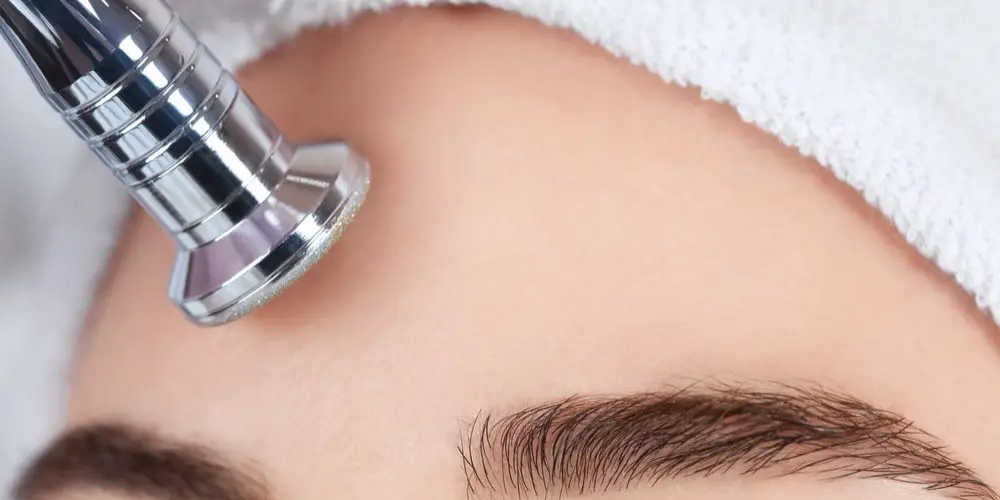
RELATED: Home Microdermabrasion — Your Best Options
Ideal candidates for microdermabrasion
Ideal candidates for microdermabrasion are healthy and have fairly mild skin conditions or imperfections.
Microdermabrasion works best as a treatment to:
- Clean clogged pores
- Reduce fine lines
- Even out pigmentation irregularities
- Smooth away roughness
- Freshen up your complexion
- Reduce minor acne and scars
It also works as an alternative for people whose skin is too sensitive for certain acne medications, like Retin-A.
As with any cosmetic procedure, it’s important that you fully understand the procedure’s limitations and benefits. Microdermabrasion is a mild, non-invasive treatment, so it can’t address sagging skin, or fix deep facial creases and dark spots. It can’t be used to remove tattoos either, nor is it of any use on scars caused by severe acne.
There are several other conditions that can’t be treated with microdermabrasion, and in fact might make someone a poor candidate, including:
- Active rosacea
- Delicate capillaries
- Vascular lesions
- Severe, widespread acne
- Herpes
- Warts
- Open sores or wounds
- Skin lesions
- Eczema
- Dermatitis
- Psoriasis
- Lupus
- Erythematosus
- Diabetes mellitus
- Anyone taking anti-coagulants
Anyone suffering from heavily damaged skin should consider other procedures first, like laser resurfacing or a deep chemical peels.
Additionally, you will be advised to wait two weeks to six months before having microdermabrasion performed if you have just had a chemical peel or other skin procedures like collagen or Botox injections.
Recovery timeline
Two of the best things about microdermabrasion are the incredibly short recovery time and almost instant results. It’s so easy that the treatment is often called a “lunch break” procedure. In the short time it would take you get a quick bite, you can dramatically improve your skin, reduce the appearance of mild scars, and give yourself a healthy glow!
After your first microdermabrasion treatment, your face will have a pink or red color to it. This usually fades within a day. The sensation is similar to sunburn or windburn, but this slight discomfort usually lasts a matter of hours. In most cases, you can go back to work right away.
You’ll still want to avoid any activities that can cause you to sweat, because bacteria in your sweat can increase the risk of infection as your skin heals, but you should be able to return to the rest of your routine immediately.
Top 10 Microdermabrasion Recovery Tips
- Keep your new skin clean and moisturized.
You should wash your face right after treatment with a wet cloth and a good re-hydrating toner to get rid of any remaining dead skin cells. Use either a very soft towel, or simply let your face air-dry. Once it has fully dried, use a rich moisturizer; your doctor will recommend a brand.
Moisturize whenever you feel like it’s necessary for the next 4 to 6 days to keep your skin from drying out.
- Use an anti-inflammatory cream or a cold compress to help with the tenderness and burning sensations.
That being said, be sure to only use them in moderation, or as suggested by your doctor. Some copper-based lotions use relatively light ingredients that can help your skin recover quickly. For the best results try a microdermabrasion serum with high vitamin A, C, and E content.
- Stick to a sensitive cleanser with no harsh chemicals or scents.
Rinse with cool or lukewarm water. Ask your doctor what they recommend. They will often have a suitable product ready for purchase in their office.
- Don’t pick at, scratch, or remove dead skin!
Some skin impurities can appear after treatment, and peeling is completely normal following microdermabrasion. It’s actually a sign that it’s working. But you’ll need to leave your facial skin alone, and allow it to renew on its own. Scratching can cause scarring and dark spots. Resist the temptation!
- Avoid irritating your treated skin with harsh chemicals or other activities for at least a week.
That means no makeup, perfumes, or aftershave lotions for a little while. You should also not use any exfoliating products for a week or so.
- UV rays can damage your new skin, slowing recovery.
This means you’ll have to stay out of the sun for at least a full week after your treatment. If you have to go outside, ask your doctor what sunscreen lotion they recommend. A wide brimmed hat and sunglasses are also a good idea.
- You’ll need to avoid heat sources and anything that will make you sweat a lot.
Sweating too much can irritate your skin, and bacteria can get trapped in your sweat and seep into exposed pores. This can lead to large-scale acne breakouts or irritation. Avoid vigorous exercise, steam rooms, and saunas for several days.
- Ask your doctor about the best diet for people undergoing microdermabrasion treatment.
They’ll likely tell you to try eating more fruits and veggies and less red meat and dairy. You might also be encouraged to take some supplements. Ask your doctor which vitamins and minerals are best for maximizing your treatment and speeding up your recovery.
- Wait until your doctor gives you the go-ahead to start using prescription products again.
Certain products like Retin-A, Renova, and Tretinoin can be used 3 to 7 days after your last microdermabrasion treatment, or as instructed by your doctor. Make sure you check each product before applying it to your face. If you have doubts, or can’t read the ingredients, simply ask your doctor about it.
- Stay hydrated.
Microdermabrasion often robs the facial skin of its moisture, so you will need to moisturize diligently for the week following treatment. Drinking lots of water is also ideal for recovery because it helps keep bodily functions operating at their optimum, which is what you need at this time.
Maintaining your results
You’ll most likely be able to see some improvements to your complexion after just one session, but your optimal, final results won’t be visible until you’ve gone through all your recommended treatments. Because it’s so gentle, many patients tend to incorporate microdermabrasion into their normal skincare routine, getting treatments on a regular basis to maintain their improved complexion.
Fine wrinkles and lines, enlarged and clogged pores, mild acne, complexion problems, and a range of other issues will likely show an instant improvement. Most patients also see a significant and immediate improvement in the color, tone, and texture of their skin.
Most people will need more than one microdermabrasion treatment to reap the full benefits. These sessions are usually done a week or two apart, with the total number of treatments varying. In general, over the course of these treatments, the skin becomes thicker, healthier, and more youthful looking.
Microdermabrasion treatments help promote the growth of new layers of skin with more elastin and collagen, the main chemicals responsible for giving your skin its structure and elasticity. This leads to an overall improved complexion and gives the skin a beautiful, healthy glow.
Maintaining your results can be difficult because your skin will continue to age. Because of your skin’s natural processes, dead cells will build up, even after all your treatment sessions are complete. There are three ways that you can help your results last, and keep your skin looking smooth and youthful for longer:
- Always use sunscreen
Sunscreen is always the best solution for maintaining your appearance. After a microdermabrasion treatment, applying sunscreen with SPF 30 or an even higher spectrum is the most effective way to protect your skin from unnatural elements like pollution, as well as ultraviolet rays.
Even on the cloudiest days you are still exposed to UV radiation from the sun, which can prematurely age your skin if you leave it unprotected. Use sunscreen even if you’re only going outside for a short period. After all, many scientific studies have proven that UV is the primary cause of complexion irregularities.
- Eat a healthy, antioxidant-rich diet
After microdermabrasion, you can help your skin from the inside out with a diet rich in antioxidants. Proven to slow down and possibly even reverse the visual signs of aging, antioxidants are perfect for fighting wrinkles and sun damage. Stock up on foods like colorful vegetables, berries, green tea, mixed grains and nuts.
- Exercise
One of the most effective ways to maintain your results, and even continue to improve your skin after treatment, is to start an exercise routine. Exercise has been shown to improve aging skin in adults, and even those who start working out later in life can reap these benefits.
In fact, adults who haven’t done much exercising until recently have been shown to gain incredibly similar skin improvements to those who are both younger and have been exercising for longer.
Microdermabrasion side effects and risks
Another of benefit of microdermabrasion is that it’s an extremely safe procedure with minimal risk of side effects or complications. In general, microdermabrasion side effects are mild and very temporary. All potential problems are limited to the outermost layer of skin, and usually associated with unsterile conditions or improper application of the treatment.
Common temporary and minor side effects include:
- Skin tightness
- Redness
- Minor bruising
- Skin sensitivity
- Post-inflammation hyperpigmentation, which is a darkening of the skin after inflammation has passed
- Small, superficial scrapes to the skin
- Spots of bleeding
- Infection
- Bruising to the skin around the eyes, especially if you’ve been taking aspirin or other blood thinners
- Fine broken blood vessels
- Cold sore reappearance around the lips
Cold sores returning are a rare occurrence after microdermabrasion. They can appear around and near the lips. If you’ve had a lot of cold sores in the past, think about either avoiding treatment near your lips or ask your provider about taking an antiviral medication beforehand.
Similarly, post-inflammatory hyperpigmentation usually only occurs after overly aggressive microdermabrasion. This type of overaggressive treatment can also increase the chances of bruising, especially if you’ve been taking blood thinners. If you want to minimize bruising, avoid blood thinners for at least 2 weeks prior to your treatment.
There is also a small risk of infection. This is extremely rare and happens not only when the microdermabrasion applicator wand and vacuum aren’t properly sanitized, but also with improper care post-treatment.
Lastly, if used incorrectly, there is a risk of the crystals entering the eyes and causing irritation and discomfort.
When performed by an experienced professional, microdermabrasion only removes the outermost, superficial layer of skin. This means scarring or pigment changes are extremely rare when the procedure is done correctly.
How much does microdermabrasion cost?
One of the many benefits of microdermabrasion is it’s low cost. In fact, it’s usually much less expensive than most cosmetic skincare procedures. The price is determined by a number of factors, but usually is priced in the $75 to $200 range, per session. The average price for a professional microdermabrasion treatment is around $175.
The cost of your microdermabrasion will depend on a number of factors, including the location you have the procedure done, the skill and experience of your medical esthetician, and the extent of your unique treatment needs.
Home versions of the devices used by professionals vary dramatically in price range, from as low as $40 to well over $1,000. Of course, the advantage in price here is that you only make the investment for the machine once, and then you can use it as frequently you want.
Microdermabrasion creams and scrubs also vary a lot in price, though the average tends to be a lot less expensive than either professional treatments or home machines. Some of the most expensive scrubs cost nearly $300 per bottle, but they usually vary between $20 and $200.
Frequently asked questions
Is microdermabrasion safe?
If you’re in the hands of an experienced practitioner, absolutely. One of the most important benefits of microdermabrasion is its amazing safety record. Thanks to its non-invasive process, this treatment is able to significantly improve your complexion with minimal risk and no impact on the deeper layers of skin.
Who is qualified to perform the procedure?
Estheticians, registered nurses, dermatologists, and plastic surgeons can all perform the treatment. In general, the procedure costs less when performed by an esthetician or RN at a spa or salon.
Usually dermatologists and surgeons offer much more specialized and therefore more expensive treatments, even combining microdermabrasion with other cosmetic procedures.
It’s highly recommended that patients with certain skin types or conditions visit a medical setting rather than a spa, salon, or use a home treatment. This will undoubtedly raise the price, but conditions such as active rosacea, severe acne, and hyperpigmentation can be worsened by microdermabrasion.
If you have any of these conditions it’s recommended that you seek the attention of an experienced medical professional who has specialized training, such as a dermatologist or plastic surgeon.
How many treatments are required?
Almost everyone who undergoes a microdermabrasion procedure will see improvements after their first treatment, but long-lasting results can only be created with multiple sessions.
Most practitioners recommend between four and eight sessions, spaced out every two to three weeks, so you’ll need to take that into account when considering the final cost.
Note that generally, the price for microdermabrasion that’s advertised is for only one session, but some locations will have special package deals that lower the average cost for multiple treatments.
What’s the difference between a chemical peel and microdermabrasion?
Both chemical peels and microdermabrasion are a form of exfoliation, but with one major difference: a chemical peel is a chemical exfoliation, and microdermabrasion is a physical exfoliation. This means that the biggest difference between the two treatments is how they go about removing dead cells from the surface of your skin.
Chemical peels, just like microdermabrasion, are used to treat fine lines and wrinkles, discoloration from sun damage, reduce the appearance of scars, help clear up breakouts, and generally improve the look of your skin.
But rather than buff away dead skin cells like microdermabrasion, chemical peels use a chemical reaction to dissolve the connection that holds the dead cells together. The cells then simply shed or flake off, revealing the newer and smoother skin beneath.
In general, peel treatments are able to penetrate deeper into the skin and treat certain conditions more aggressively than resurfacing techniques, like microdermabrasion. These sorts of treatments are specifically designed to help exfoliate thick, oily, and acne-prone skin. They also help treat stubborn hyperpigmentation, sun damage, and collagen loss.
That said, the stronger the chemical used for the peels, the higher the risk and chances of complications. Speak with an experienced practitioner to find out which treatment is best suited to your needs.
Should I get a chemical peel or microdermabrasion for my large pores?
The size of your pores is a trait that you inherit from your parents. Enlarged pores can often make skin look less smooth and unattractive, and are most noticeable around the forehead, nose, and cheeks. Large pores are also usually associated with oily skin and acne. Thankfully, large pores can be treated with either chemical peels or microdermabrasion.
Chemical peels are able to remove the outermost layer of skin, leaving the new layer exposed and raw. Over the course of a week or so, new skin forms with the potential for smaller pores. This treatment can be mildly painful. Light peels are less expensive, but require more frequent sessions for the best results. Deeper peels are more expensive, more invasive, and most effective.
Microdermabrasion is also an effective treatment for large pores. This treatment doesn’t actually shrink your pores but it does unclog them, making the skin look cleaner and more even. With this sort of treatment, however, the results are much more immediate than a chemical peel and your skin will be healthier overall. This procedure usually also requires more than one session.
An open discussion with your practitioner can help you determine the treatment that is better suited for you and your needs.
Can I get microdermabrasion done on my body?
Although the face is by far the most popular area for microdermabrasion, it is possible to get microdermabrasion on your body as well. Some areas that can be treated include the chest, knees, and upper arms.
How long does a microdermabrasion session take?
Under typical circumstances, a microdermabrasion treatment session usually lasts about 30 to 60 minutes. You’ll most likely be able to see some pretty amazing improvements right away, but the best, longest lasting results can only be achieved through a series of treatments done over the course of several weeks.
Is the treatment painful?
No. When performed correctly by an experienced professional the procedure should be completely painless and leave no lingering discomfort at all. The procedure only uses tiny crystals or diamonds to gently exfoliate the skin. However, if you have a low tolerance for pain, it may feel a little uncomfortable — but not to the point that it becomes unbearable.
That said, microdermabrasion does often create a mild warming or tingling sensation that most patients describe in somewhat positive terms.
Can I use microdermabrasion to eliminate acne scars?
Microdermabrasion can improve the look of minor, mild acne scars, but it isn’t intended as a treatment for deep or keloid scars caused by severe acne. The best treatment to handle issues like this is an acne chemical peel. Be sure to discuss your options with your provider.
Should microdermabrasion be performed by a doctor?
Not necessarily. Microdermabrasion can be performed by a properly trained and experienced esthetician or registered nurse, as well as by a dermatologist, plastic surgeon or other doctor. There are even a range of at-home options to choose from.
Keep in mind, however, a dermatologist or surgeon will be much more likely to notice, diagnose, and treat any skin problems that might have a negative impact on your microdermabrasion treatment.
Are at-home systems effective?
Thanks to the recent rise in popularity of microdermabrasion, many DIY systems have been made available to consumers. Kits range in price, and some include a small mechanical or battery-operated applicator (a smaller, home-version of the wand used by professionals), while others are simply a jar or bottle of a product meant to be applied by hand.
All of these home systems can help improve your skin. That being said, it’s important to remember that at-home results won’t be as significant as they would be if done by a professional using a medical grade device. Also, keep in mind that using it too often can damage your skin. Be sure to follow all the instructions carefully.
Can I go back to work after a microdermabrasion treatment?
If you want to, you can certainly return to work. The procedure is low risk, non-invasive, and has only mild side effects that fade quickly. Some patients might notice a little tightness in their skin right after treatment. Others might have some slight dryness, depending on their skin type. A simple moisturizer can help with this issue. You’ll also be asked to not wear any makeup for the rest of the day to give your skin a chance to heal and breath.
Because redness can last the remainder of the day, and it’s best if you don’t put on any makeup, many people choose to simply head home after the procedure to relax. But you don’t have to if you don’t want to.
How long do microdermabrasion results last?
Results are permanent, but the effects of aging, the environment and your lifestyle habits will shorten their longevity. Most patients get treatments on a regular basis, spaced a couple of months apart. They do so to maintain their results, delay future complexion irregularities from developing, and to improve their skin even more.





